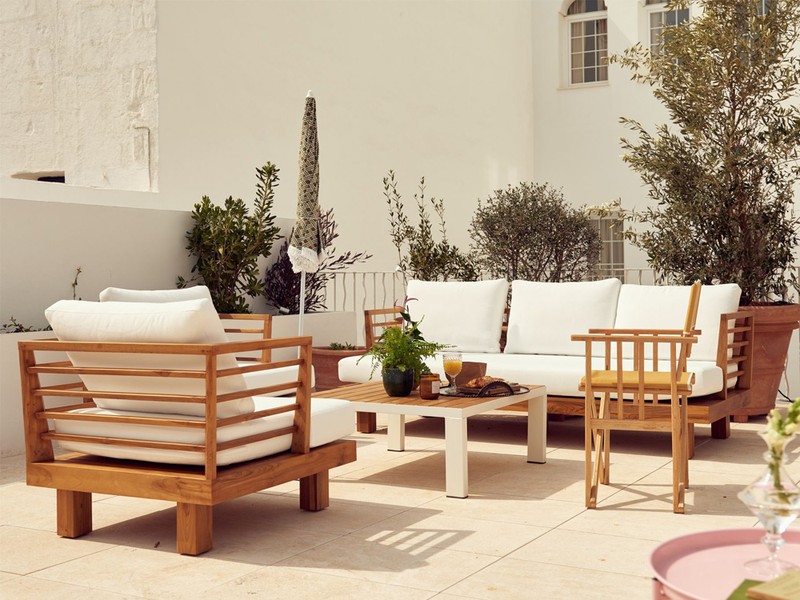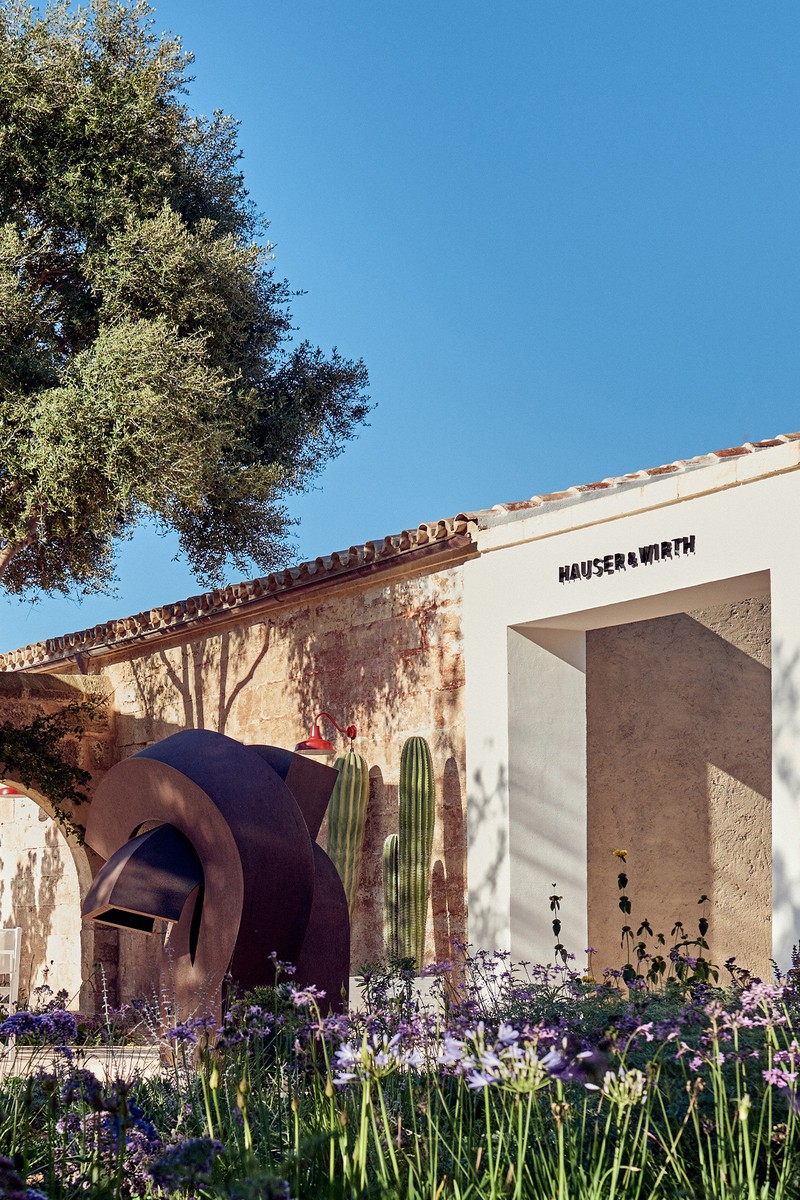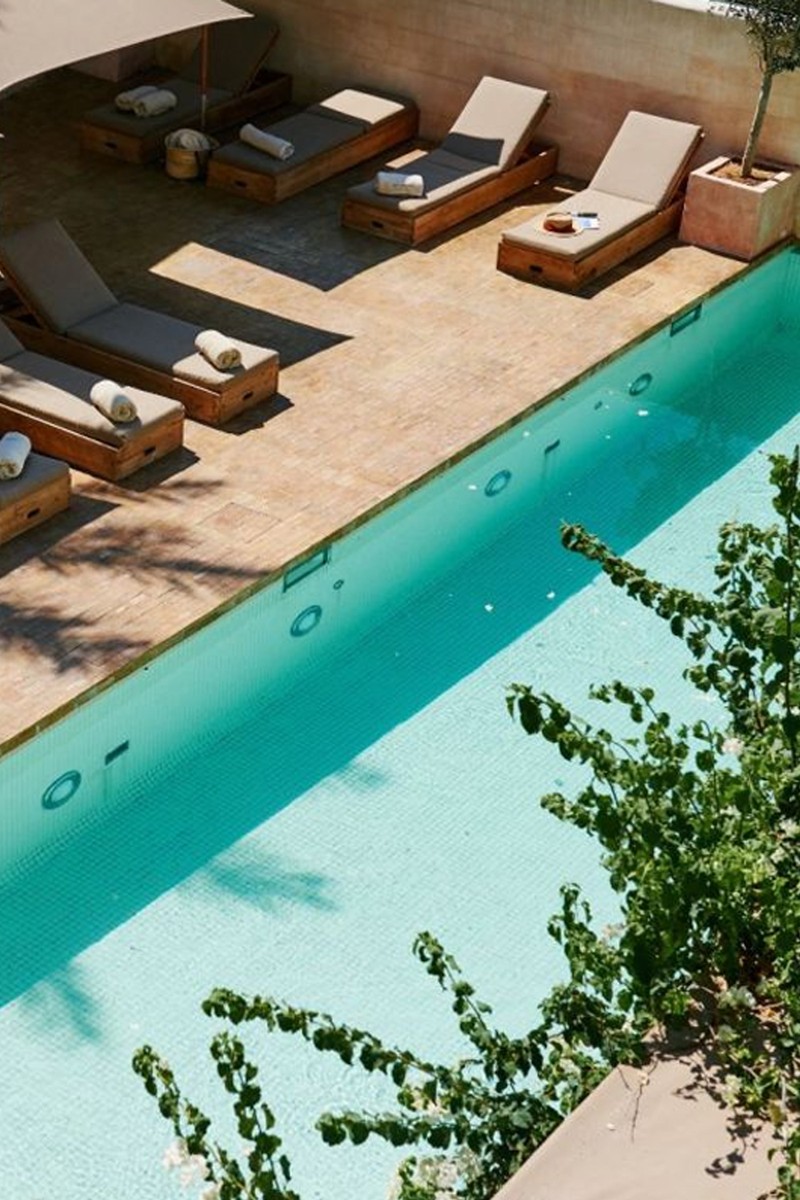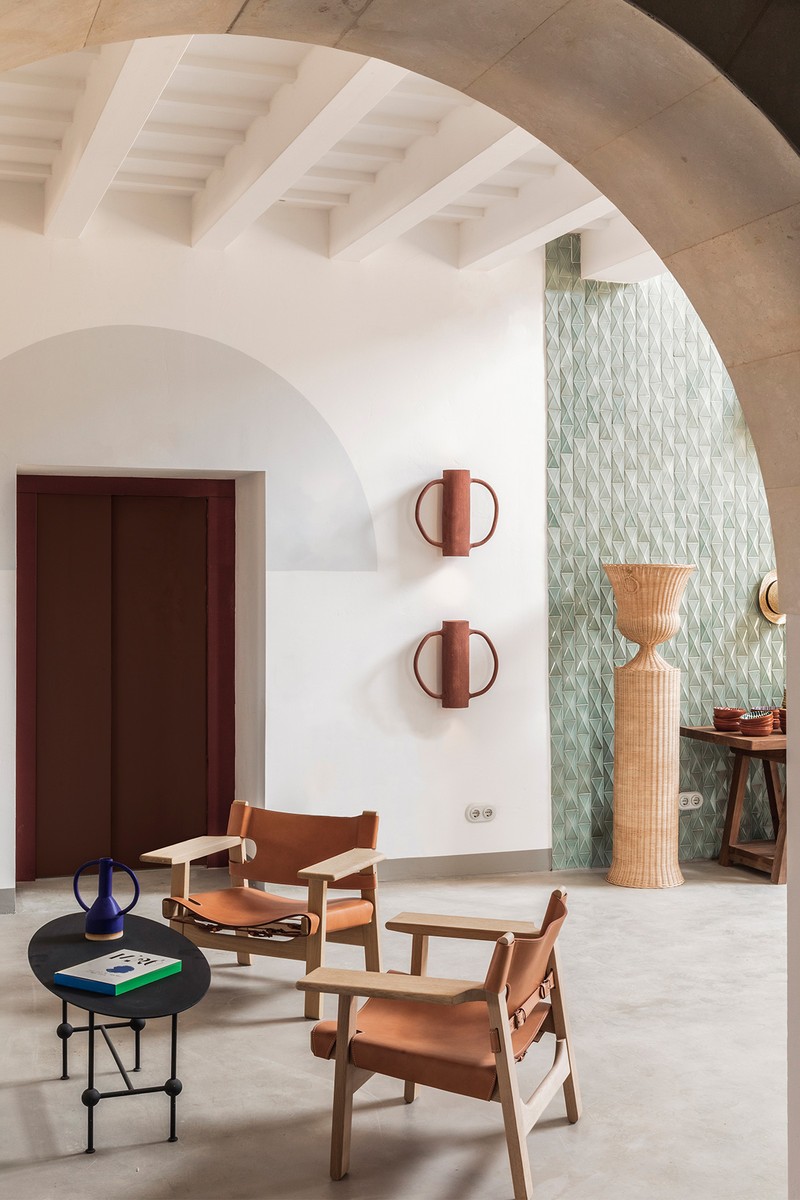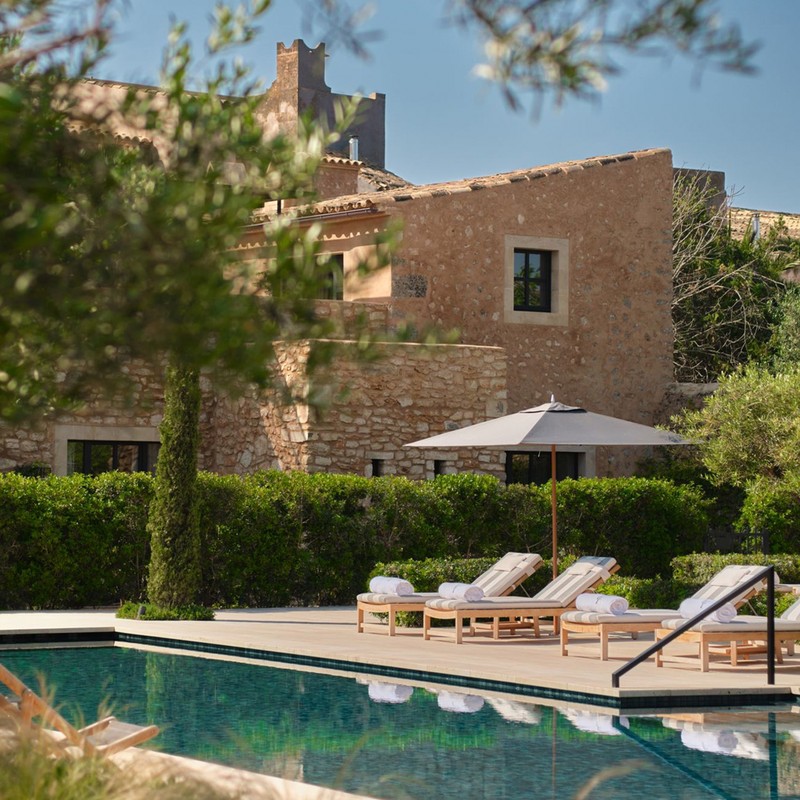
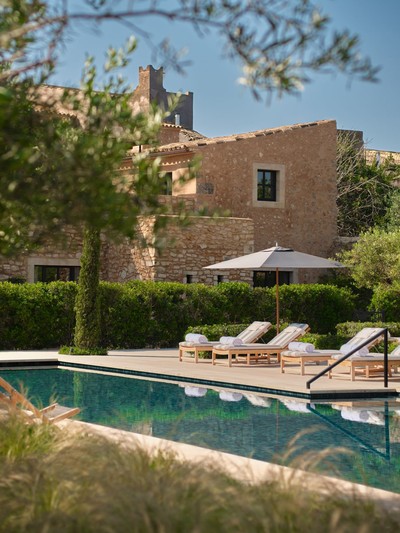
Which Spanish Island Is For You?
FOR FOODIES & WINE LOVERS
Mallorca
Forget any preconceived ideas you may have of partying in the streets of Magaluf until the small hours. Over the last few years, Mallorca has evolved and, if you’re after a few days of gourmet experiences, there has never been a better time for a culinary tour of the island thanks to the number of Michelin-starred restaurants and refined tapas bars that have sprung up. There is also a raft of chic, newly opened boutique hotels to book into and wineries to visit.
Our Favourite Restaurants…
Fernando Perez Arellano is the only Baleares-based chef with two Michelin stars and you’re assured a gastronomic adventure at his restaurant, Zaranda, which has now relocated to Palma’s Hotel Es Princep. The three tasting menus include eclectic interpretations of traditional Spanish dishes – we loved the poached black egg with creamy white onion purée and cuttlefish caviar and the lamb’s loin merguez with roasted endives, citrus and raz el hanout. Eddie Hart, one of the founders of the Barrafina restaurants in London, is the man behind El Camino in Palma where the chefs source the very best produce, cured meats and cheeses from local markets and suppliers to create a menu of sharing dishes and daily specials. Like Barrafina, there are no reservations, so be prepared to get there early and join the queue. Located in a trendy part of Palma, El Txoko de Martin is an informal restaurant where guests can experience top chef Martín Berasategui’s cooking. His menu comprises a selection of tapas and some more elaborate dishes, the home-made brioche lobster roll with coleslaw and the slow cooked milk-fed lamb shank being amongst our favourites. Located off a narrow, cobbled road in Palma’s old city, Forn is located in a former bakery dating from the 19th century. The tapas menu here keeps foodies coming back for more – think cold, shaved foie gras with beef; cannelloni with Parmesan truffle sauce; cornets filled with ceviche of sea bass; and langoustines with coconut foam. On the Moll Vell marina in the port of Palma, Mar de Nudos is a chic waterside restaurant with two kitchens, one focused on Japanese food and the other on Italian. Both the sushi and truffle pasta are excellent. Former Nobu chef Bernabé Caravotta offers guests the opportunity to travel the world at Vandal where you’ll find some of the best small plates on the island. Inventive dishes include the likes of ceviche cornet with coconut foam; smoked whisky sour oysters; Patagonian squid with beets and squid-ink sand; and burrata with courgette flower tempura and Sicilian tomato pesto. To the west of the city, Santa Catalina has emerged as an area known for its cool foodie scene. Head to Spot where the vast menu includes truffle pizza, beef tacos and rigatoni gratin, as well as Asian-influenced dishes like tuna sashimi tortillas, crunchy soft-shell crab and chilli fried edamame.
Away from the capital, clifftop Bens D’Avall in Soller has amazing sea views but the quality of the food is what makes this restaurant a must-visit. The tasting menus feature contemporary, seasonal twists on classic Balearic dishes – think Mallorcan black pork with navel oranges and sun-dried apricot; potato bun stuffed with duck civet, Albufera sauce, candied kumquat and fresh marjoram; and slow roasted local lamb with fresh peas, glazed sweetbread and an old-fashioned "rostit" juice. It’s also a great winter option as you can cosy up indoors in huge armchairs next to roaring fires. Family-run Restaurante Sebastián in Deià occupies a converted 250-year-old stable where chef Sebastián Pasch uses fresh seasonal produce to create distinctive dishes such as tiger prawn carpaccio with goji berries, lemon pearls and watercress; crispy roll of pulled pork with caramelised apple and sweet potato; rack of lamb with a rosemary-honey crust, green bacon beans and potato purée; and orange and cherry sorbet with mint chip. Front of house, you’ll find maître d’ Patricia, Sebastian’s wife, who ensures a lively and welcoming atmosphere. Macarena de Castro was the first female chef on the island to be awarded a Michelin star for her restaurant Maca de Castro in Port d'Alcúdia. Using fresh ingredients from her own orchard, expect Mediterranean dishes with a twist. Our recommendations? Courgette flower in meringue with loquat oil; broad bean and pork lard tartlet; and Wellington of lobster with Mallorcan soups. Micelli is a small family restaurant, located in a quaint 19th-century Majorcan townhouse in Selva, where the chef Marga Coll and her brothers grew up. Dishes changes daily, dependent on the fresh, seasonal produce Marga finds in the market, but you can expect to choose from a five- or seven-course menu, as well as some à la carte dishes.
Wineries To Visit…
Winemaking in Mallorca goes back to Roman times, but the vineyards were devastated by phylloxera at the end of the 19th century and were not replanted until late in the 20th century. Today, there is a growing number of small wineries dotted across the island that are worth visiting. These include: Vins Miquel Gelabert located in the centre of Manacor; Can Majoral in Algaída; Can Axartell near Pollença, which is also known for its olive oil; and Vinyes Mortitx in Escorca. Be sure to book your visits and tastings in advance.
Where To Stay…
Situated in the heart of the historic centre of Palma, five-star boutique hotel Sant Francesc is a great base for a city break. The former mansion, built in 1860, was restored a few years ago and is now home to 42 rooms and suites, some with balconies overlooking the neighbouring basilica in the square. They are big on food here, with courtyard restaurant Quadrat a favourite with foodies. There is also a stylish rooftop pool and bar for cocktails and sangria. Also in the old town is Hotel Convent de la Missió which dates back to the 17th century when it was home to missionary fathers. Today, this stunning minimalist hotel is a haven of serenity and tranquillity with high vaulted ceilings, limestone walls and large windows. The 27 cream and white rooms and suites are light and airy with ultra-chic bathrooms. There’s also a trendy bar, a superb restaurant (book early, as it’s popular with outsiders) and sitting room. In the old quarter of La Lonja, Can Bordoy is a charming five-star retreat set in a 16th-century building. The atmosphere here is theatrical with lots of velvet furnishings, gothic pillars and baroque gilt mirrors. The 24 rooms and suites are a mix of old and new – retro furniture, original fireplaces, frescoed ceilings and chandeliers sit side by side with modern touches like concierge tablets, music systems, mirrored TVs and controls to change the firmness of your mattress. The best bits? A lovely walled garden (the largest in Palma) with a heated pool, and a spa with sauna, steam room and splash pool.
Just a 15-minute drive from Palma in the foothills of the Tramuntana mountains is Son Net, a stylish, art-filled hideaway on a private estate dating back to 1672. It has recently re-opened as a sister hotel to one of our favourite Spanish hotels, Finca Cortesin near Marbella. With just 31 suites, the interiors have been tastefully transformed, while preserving many of the mansion’s original features – think rustic beams, stone floors and archways, carved wooden ceilings, antique fireplaces, an original 17th-century interior courtyard and a chapel. Outside, there are several pools dotted through the gardens where you can relax surrounded by breath-taking views. The hotel also has its own farm, citrus orchards and vineyard producing Malvasia white wine.
In the lesser-known southeast of the island, the Soldevila-Ferrer family, owners of Sant Francesc, have opened Can Ferrereta in the town of Santanyí. They have meticulously restored a historic 17th-century building, transforming it into a 32-room hotel surrounded by pretty gardens. The interiors are reminiscent of a grand summer house, featuring simple and sleek furnishings together with original rustic wooden beams and stone. Each room is individually designed with bespoke furniture and hand-picked art; in fact, art plays a big part here with a focus on local and Spanish artists, and some pieces from the family’s private collection. A stunning two-metre, 280 kilo visage sculpture by the renowned Barcelona-born Jaume Plensa takes pride of place in the garden. The hotel’s restaurant OCRE serves simple and seasonal Mediterranean fare, made from local produce, much of which from the market in Santanyí. This is a great location, just inland from the stunning beaches that stretches for more nearly 50km on this spectacular coastline.
If you want to treat yourself to some ultra-luxury for a few nights, book into La Residencia on the edge of Deià. Nestling between the mountains and the sea, this is the ideal spot for early-morning dips and afternoon hilltop hikes. Set in a collection of 16th-century honey-coloured manor houses, the property is surrounded by olive groves, citrus trees and gardens. Individually designed rooms and suites feature Mallorcan paintings by local artists, sun-splashed balconies and some have private plunge pools. Guests can relax by the two outdoor swimming pools; there’s also an award-winning spa with an indoor pool, tennis courts, a fitness centre, an acclaimed restaurant set in a former olive mill and a casual restaurant serving Spanish tapas.
FOR LAIDBACK WELLNESS
Ibiza
Ibiza has seen a hotel boom in the last decade, with many focused on wellness – so it’s the ideal place to visit if you’re in need of a reboot. While you can still party until dawn in Ibiza, there’s a quiet side to the island that is worth exploring, especially as it only takes about an hour to drive from one end to the other. Seek out the charming inland towns and villages like Sant Josep de sa Talaia and San Gertrudis, and the many unspoilt beaches like Aguas Blancas and Cala Xaracca in the north, and Cala Conta and Cala Saladeta in the west. While the south of the island tends to be busier, the beaches here are, unsurprisingly, stunning – Cala d’Hort and Playa d’en Bossa are two of our favourites off season. Also worth a visit is the historic quarter of Ibiza Town, situated behind the medieval walls – the cobbled streets are teeming with cute homeware stores, lovely boutiques, and buzzy restaurants and bars.
Where To Stay…
After opening its doors a couple of years ago, Six Senses has cemented itself as the uber-luxe option for its spa experiences, yoga retreats and raft of treatments from detoxes to sound healing. New this year is the RoseBar, a wellness club with a resident doctor and state-of-the-art tech like cryotherapy chambers, infrared saunas, cold plunge pools and biohacking tools. Also new, there are wellness retreats for weekend or week-long trips, plus fresh dining offerings like the Mediterranean restaurant North headed up by chef Eyal Shani, an Italian-inspired menu at The Orchard and Spanish dishes at La Plaza. The property is located on the peaceful northern tip of the island and set over 20 acres, with unrivalled sea views and direct access to one of the most beautiful bays in Ibiza, Cala Xarraca. Rooms are decorated in soothing neutral shades, the bathrooms have walk-in showers and robes by Italian brand La DoubleJ, and the minibars are stocked with healthy brands, including mushroom supplements and CBD-infused sparkling drinks.
OKU Ibiza is also one of the island’s newest offerings, situated on the west side of the island and nestled in the pines on the edge of Cala Gració. With a relaxed, rustic vibe, this hotel has the feel of a Six Senses property, but at a more accessible price. The adults-only spa has five treatment rooms and a suite for couples, and is staffed by internationally trained therapists. The group – which also has a hotel on the Greek island of Kos – offers an alternative way to experience island life, encouraging guests to disconnect and focus on themselves. Healing rituals include gong baths, reiki sessions and crystal healings. Best of all, the OKU Spa is the first European outpost to offer OTO CBD signature massages and facials, and its OKU Retreats series is a selection of wellness breaks hosted by some of the best-known names in the fitness and wellness world. You can also join daily yoga sessions, arrange for Pilates and tai chi classes, or book a personal trainer. After all that, you can relax in one of the poolside cabanas. Rooms are done up in earthy tones, most with balconies; for the ultimate private escape, book one with a swim-up pool. The two restaurants are overseen by former Sushisamba chef Mark Vaessen – the upscale OKU Restaurant serves Japanese dishes with a Mediterranean slant, while the more casual eatery, Kima, has a lighter menu with Asian accents. And if you tire of these, Michelin-starred restaurant Es Tragón is a three-minute drive away.
Another favourite and one of the most stylish hotels on the island is Atzaró, near Santa Eulalia. Expect serious luxury – the bedrooms are simple yet chic, the restaurants and bars serve delicious food, and the on-site Balinese-style spa is a great place to relax – there’s an aerobic pool, sauna and steam rooms, and the range of treatments is heavenly, from Ole Henriksen facials and reiki to cupping and shiatsu massage. You can also start the day with yogalates and stretching classes.
Where To Eat…
The choice of restaurants on Ibiza is vast but here are some of our favourites. Deep in the countryside, La Paloma is a simple, laid-back spot near the village of San Lorenzo. Expect home-cooked style food made with the very best locally sourced organic ingredients served beneath the trees. The menu changes frequently but the salads and pasta dishes, as well as freshly baked bread are always available. In the centre of Santa Gertrudis, Finca La Plaza is set in a pretty garden and has a great menu, from flame-grilled aubergine croquettes, bluefin tuna tartare with mango caviar, crispy rice and a spicy sauce to lobster tempura with zucchini flowers and ginger ponzu sauce. Over in the centre of Santa Eulalia, Hämbre is a small restaurant worth the trip. Championing local and sustainable produce, the 12-plate menu changes every three days. Expect to try dishes like bonito crudo with padrón peppers, fried razor clams with kohlrabi and toasted cabbage with Caesar dressing. Sister restaurant to Passion Café in Ibiza Town is the new Middle Eastern restaurant, Yalla, in Santa Gertrudis. Each plate showcases the variety of produce found on and around the island – the ‘salatim’ menu has a selection of salads and mezze boards featuring falafel, zaatar halloumi and chargrilled aubergine, all drizzled with tahini. Meanwhile, seabass, lamb koftas, chicken shish tawooks and other meat and fish options are cooked over the grill. Don’t leave without a Turkish coffee and slice of baklava. El Chiringuito on Es Cavallet beach is one of the island’s most famous restaurants and the place for a long lunch. The menu changes regularly so there’s always something new to try – either from a day bed on the sand or in the shaded boho-inspired restaurant. Dishes are designed to be shared, from seafood platters and whole grilled fish served at the table to tapas-style starters like smoked aubergine, calamari and tuna tartare. Ibiza’s Old Town is lined with family run restaurants and cafés, but El Olivo Mio is one of our go-tos. In true Spanish fashion, dinner is served late, but it’s worth getting there early to secure a table outside on the cobbled street.
FOR ART LOVERS
Menorca
Quieter than Mallorca and Ibiza but just as beautiful, Menorca has everything you need for a memorable holiday, with great food and chic hotels. But since the opening two years ago of the Hauser & Wirth art centre, the island has now made its way into the art lover’s little black book of must-visits. In a former 18th-century naval hospital built by the British on the Isla del Rey in Mahón Harbour, you’ll find a huge exhibition space showcasing contemporary artists from around the world, an outdoor sculpture trail, a restaurant, a shop and a garden with indigenous flowers by Piet Outdolf of New York’s High Line fame, who also worked on Hauser & Wirth’s Somerset outpost. The outdoor sculptures include works by Stefan Brüggemann, Hans Josephsohn, Paul McCarthy, Eduardo Chillida, Matin Creed and Laia Estruch. The exhibition space indoors is currently (until the end of October) showcasing the works of Los Angeles-based artist Christina Quarles; there is also an exhibition called ‘After the Mediterranean’ showing works by artists who originate from or work within territories bordering the Mediterranean, including Spain, Albania, Morocco and Lebanon. Be sure to book a table at Cantina, the bistro where you can enjoy seasonal sharing plates of vegetables, seafood, fish and grilled meat, as well as a great selection of wines under the shade of olive trees.
Other museums worth visiting in Mahón, depending on your interests, include the Museum of Menorca for a journey through the island’s history; the Ca n’Oliver art centre for prints and decorative arts from the 18th to 21st centuries; and Galería Cahón for contemporary art by Spanish and international artists. Elsewhere on the island, you can see a collection of contemporary art by artists as internationally recognised as Joan Miró and Miquel Barceló at Loac in the town of Alaior.
Where to Stay…
Mahón has several lovely boutique hotels in handsomely restored townhouses. Situated in the heart of the historic centre of the city, Can Albertí has 14 rooms and suites decorated with a tasteful mix of contemporary art and antiques. It has a large rooftop terrace where you can enjoy the sunset over the bell towers, the old houses with their patinated roofs and the nearby bay of Mahón. We also love the newer Cristine Bedfor – a collection of three adjoining Menorcan houses in the centre of town. Interiors are tastefully decorated with antiques, vintage furniture, rich fabrics and broquante-sourced finds. The pool in the pretty garden is the perfect spot to unwind after a day out, or in the cooler months you can curl by the fireplaces in the cosy sitting rooms. The 21 rooms and two apartments all differ in décor and size, some with terraces with views over the rooftops. Light bites, based on local ingredients, are available throughout the day.
At the other end of the island in the former capital Ciutadella, Faustino Gran is set in a 16th-century merchant’s palace. Blending nicely with the medieval architecture, the whitewashed building is surrounded by lush gardens that conceal three pools spread across the country club, main building and two nearby annexes. Rooms are simple yet elegant and there’s a subterranean spa built into the rocks. At sunset, the patio turns into the restaurant where you can enjoy Mediterranean cuisine based on local produce – it’s a haven of peace in the heart of the city’s buzzy nightlife.
In the countryside, Menorca Experimental is housed in a 19th-century finca. Surrounded by over 70 acres of land, there are nine villas and 43 rooms with art deco interiors and beach views. Rooms are spacious, with fun pops of colour and matching en-suites. There’s a spa which offers Biologique Recherche treatments and a restaurant which non-residents can visit for dinner and drinks. For total luxury, Hotel Torralbenc was the island’s first boutique hotel and has built up a loyal clientele since opening over a decade ago. Within the scenic Torralbenc vineyard, it has real Menorcan charm with its white-washed farm buildings dating back to the 19th and early 20th centuries. Rooms are light and fresh, with wooden beams and minimalist interiors – some have views overlooking the vineyard, others have private plunge pools. Guests can relax by the hotel pool which overlooks the sea and enjoy traditional Menorcan cuisine in the restaurant dining room or on the pergola. Explore the island using the hotel’s bikes and visit the nearby cliff-side caves at Cova d’en Xoroi. If you like the idea of going off grid, Santa Ponsa Fontenille was once a 17th-century palace. Set within 250 acres of land, you could easily spend a couple of days exploring the grounds and venturing to Alaior, the nearby town. The main red building has 22 rooms filled with rattan furniture and wooden beams, indoor plants and botanical art. Excellent facilities mean you barely need to leave the hotel – there’s an infinity pool and a beautiful spa built into cave walls with a heated pool in the old cistern. You’ll also find a small gym and bikes which you can hire to explore the grounds. During the summer, the hot spot is Nura, where guests enjoy candlelit dinners under the stars.
Where To Eat…
Five minutes from Ciutadella, Nonna Bazaar is one of Menorca’s hottest newcomers. It’s a lifestyle and restaurant concept by hotelier Arnaud Zannier, set within a historic finca on a 1,000-acre working farm. Based on the Menorcan tradition of long family meals, guests can enjoy all-day dining under the shaded terrace, surrounded by Aleppo pines and a herb garden. Both rustic and chic, the old finca has been carefully restored, while the menu showcases local produce with dishes like cochinillo asado, paella valenciana, linguine vongole and shakshuka. Zingy salads, fresh carpaccios and the catch of the day are served with homemade breads and pizzas from the wood-fired oven. Also in Ciutadella, Mon Restaurant I Fonda, which is headed up by chef Felip Lluifriu, is all about elegant fine dining. Housed in a boutique hotel, the menu changes frequently but you can expect delicious, inventive dishes.
Binifadet in Es Castell (about 15 minutes from Mahón) is a family-fun restaurant and vineyard and is a great choice for long lunches in the sunshine or sunset dinners. Book a table outdoors near the vines for the best views, and order sharing plates of pasta with grilled vegetables, paella, grilled meats and small dishes like pots of mussels, ham croquettes and stuffed aubergines. There’s a separate ‘Marriage Menu’ comprising seven dishes to showcase seasonal produce, plus a group menu for larger bookings. You can also book tours of the vineyard and buy a selection of wines to take home. For a relaxed dinner, just outside the town of Sant Lluis (also about 15 minutes from Mahón), Pan Y Vino is housed in a small country finca – here it’s all about traditional Menorcan and French-inspired dishes. Expect to sample the likes of aubergine and tomato crumble with sea bream; duck legs with orange and rosemary; and strawberry, coconut and passion fruit soup. There’s also a great selection of low-intervention wines and a list of interesting cocktails.
FOR BEACH LOVERS
Formentera
With the best white-sand beaches and crystal-clear waters in the Balearics, Formentera is like another world, and yet it’s only a 20-minute boat ride from Ibiza Town. The island is largely undeveloped and the locals are keen to maintain their sustainable environment – more than 70 per cent of the land is protected and car use is restricted – so biking or walking is the best way to get around.
Platja de Ses Illetes in the north of the island is one of the loveliest beaches and is great for snorkelling and diving but, as it’s the closest to the port, it can get busy with day visitors. Other popular beaches are Platja de Llevant in the north, which is good for surfing but the sea tends to be a little choppier, and Platja de Migjorn which stretches out over much of the southern coast with 5km of sandy coves and lovely sheltered spots.
Where To Stay…
The ultra-chic Gecko Hotel and Beach Club is the island’s best located hotel on Platja de Migjorn. The building is low rise and minimal, while the inside is contemporary with lots of glass and modern art. The 30 bedrooms are bright and airy, and done up in white and shades of blue. You can also expect early morning yoga classes, healthy cuisine in the restaurant, a chic outdoor bar and an Ayurverdic spa. On the same beach Casa Pacha has 16 rooms done up in neutral, natural materials – think wood, concrete and linen. The beach restaurant has long sharing tables and is very popular, especially for sunset tapas. Can Tres is set back slightly from the coast and is the perfect, peaceful hideaway if you’re after something more affordable. Nestled within lovely quiet gardens with a pool, the accommodation consists of a handful of apartments and studios with whitewashed walls and local artisan pieces.
Where To Eat…
For huge seafood platters, head over for lunch at Juan Y Andrea on Platja Illetes; it’s also a great place for people watching. For fine dining, book a table well ahead at Ca Na Joana, which is set in an intimate, beautifully restored 17th-century house. Expect fresh Mediterranean cuisine with Japanese and Peruvian touches.
FOR DIVING & SNORKELLING:
Lanzarote
Lanzarote has had a reputation for soulless resorts and package holidays, but it’s time to look beyond this outdated image. Today, the island is considered the coolest of the Canaries. The planning and development were overseen by 1960s artist and architect César Manrique (a friend of Andy Warhol) who kept buildings low rise, white-washed and sustainable, and sculptures and art installations can be seen dotted around the island.
Moreover, the island is surrounded by warm, crystal-clear ocean water with good visibility, making it the perfect place to scuba dive and snorkel. The best locations around the island are Charco del Palo and Puerto del Carmen, and one must-visit is the underwater sculpture museum, the Museo Atlántico, which is located 12 metres below the surface. When it comes to snorkelling Playa de Papagayo, Playa Chica and Playa del Jabillo are the best beaches to head to for calm waters. As you would expect, there are a number of dive schools suitable for all levels, including if you are a beginner and want to do a PADI (Professional Association of Diving Instructors) course. If you would prefer to book an organised diving holiday, Dive Worldwide offers eight-day trips to Lanzarote.
Where To Stay…
Thanks to Manrique, buildings higher than two storeys are not allowed in most places on the island. One exception is the south coast, where most of the holiday resorts are located. Hotel Fariones is one of the top hotels on the island. Set in the centre of Puerto del Carmen on the southeast coast, the property is surrounded by palm trees with direct access to the sandy beaches below. There are 213 rooms to choose from, many of which have panoramic views across the Atlantic, as well a rooftop pool where you can watch the sunset. The interiors are simple yet chic, with a touch of nautical flair throughout, and rooms have plenty of luxury touches, from a pillow menu to a complimentary minibar stocked with local treats. For large-scale luxury, the Princesa Yaiza Suite Hotel Resort occupies an enviable beachfront location in Playa Blanca and also has stunning panoramic views of the Atlantic. Despite its size, the hotel does not lack character. Boasting a plethora of facilities and amenities – three swimming pools, tennis courts, nearby golf courses and a large spa – you’ll never be short of ideas to spend those sun-soaked days. Accommodation is elegant and luxurious, while the hotel's eight restaurants offer endless dining options.
If you’re after more of a boutique hotel feel, there are plenty of options sprinkled around the island. We like Villas Alondras, which has 42 villas with pools; Palacio Ico, a nine-room hotel in the historic town of Teguise; and La Casa de Los Naranjos, a manor house built over 200 years ago that sits at the foot of the Peñas del Chache (the highest point on the island) and is surrounded by fragrant orange trees.
Where To Eat...
For upscale dining, Villa Toledo is set in a spectacular spot above the ocean in Costa Teguise and has a diverse menu, including rice dishes, as well as a variety of fish and meat options. In Arrecife’s Marina district, Restaurante Lilium has just ten tables – the menu is creative and based on what is available on the day, relying mostly on local produce – dishes might include limpets, squid and kaffir lime broth; duck leg confit with fig jam; and the speciality, roasted black Canary suckling pig. For more simple fare, one of the best restaurants for fish and seafood is Costa Azul, a very simple-looking place on the beach in the seaside village of El Golfo; we also like no frills Cofradia de Pescadores, which is run by the local fishing co-operative.
/https%3A%2F%2Fsheerluxe.com%2Fsites%2Fsheerluxe%2Ffiles%2Farticles%2F2023%2F07%2Fspanish-islands-image-15-bought.jpg?itok=KxA5TFWi)

FOR HIKERS AND BIRDWATCHERS:
The Cíes Islands
Located in the Atlantic off the northern coast of Spain, a short boat ride from Vigo in Galicia, these three lesser-known islands are a paradise for hikers and birdwatchers. Visitors come here too for the beaches which stretch for miles and are almost tropical – and why the locals call the islands the “Galician Caribbean”. Rodas beach is the longest and where you’ll find the finest white sand bordered by pine trees and clear waters. The main thing to remember is that the islands are protected and they limit visitors, so you need to buy a pass here – preferably before leaving the UK.
The Best Walks…
There are a few designated hiking paths that lead to different points of interest within the two main islands of Monte Agudo and Do Faro. They start from Rodas beach, which is where the ferry will drop you off. The easiest (about three miles) will take you past Nos Señora Beach and the bird observatory to Carracido Pier from where you can walk up to A Porto Lighthouse for amazing views of the third island, San Martiño. A more popular hike (just over four miles), which is a little more demanding, also takes you past Nos Señora Beach and the bird observatory. But then you take the main trail to the highest point to the Cíes Lighthouse, from where you’ll get gorgeous views of all the islands. There are a couple of restaurants where you’ll get simple fare including fresh fish – try Bar Restaurante Serafín and Restaurante Tapería Illas Cíes. Our tip is to take a picnic and then eat out on the mainland in the evening. Vigo is known for its excellent seafood
Where To Stay & Eat On The Mainland…
Unless you are seriously into camping, it’s best to stay on the mainland in Vigo and take the ferry over to the islands as a day trip. Vigo, situated at the mouth of the Ría de Vigo, is Galicia’s biggest city and the most important fishing port in Spain. Our favourite hotel is the chic, five-star Gran Hotel Nagari, which is right in the centre with a rooftop pool and a spa. Their Alameda restaurant has two tasting menus as well as à la carte options – expect dishes like Bilbao-style roasted black monkfish loin accompanied by sautéed asparagus, young garlic, spinach and tomato tartare; roasted grouper loin on oyster mushroom risotto, salsify and fresh herbs; grilled beef tenderloin on candied tomatoes, young garlic sprouts and pearl potatoes; as well as crab and lobster dishes. Or head out to Michelin-starred Maruja Limón where self-taught chef Rafa Centeno offers two tasting menus, based on the freshest ingredients available. In the old town, you’ll find several bars, serving delicious tapas as well as oysters.
NEED TO KNOW
When To Go…
The best time to visit the Balearics (Mallorca, Menorca, Ibiza and Formentera) is during the spring (April to June) or the autumn (September to October). During these months, the weather is mild and there are fewer crowds. July and August can be quite crowded and hot, with daytime temperatures regularly rising above 30ºC.
Lanzarote has a sub-tropical climate with hot summers, very mild winters and year-round sunshine. The highest temperatures are between June and September, with an average daily maximum of 31ºC; the coolest month of the year is February with an average daily maximum of 22ºC.
The best months to visit the Cíes Islands are June to September, for the best beach weather, the most sunshine and optimal swimming conditions and the least chance of rain.
Average Flight Times…
From London to Mallorca – 2hr 15m; to Menorca – 2hr 25m; to Ibiza – 2hr 30m; to Lanzarote 4hr 15m; to Vigo – 2hr 10m.
DISCLAIMER: We endeavour to always credit the correct original source of every image we use. If you think a credit may be incorrect, please contact us at info@sheerluxe.com.
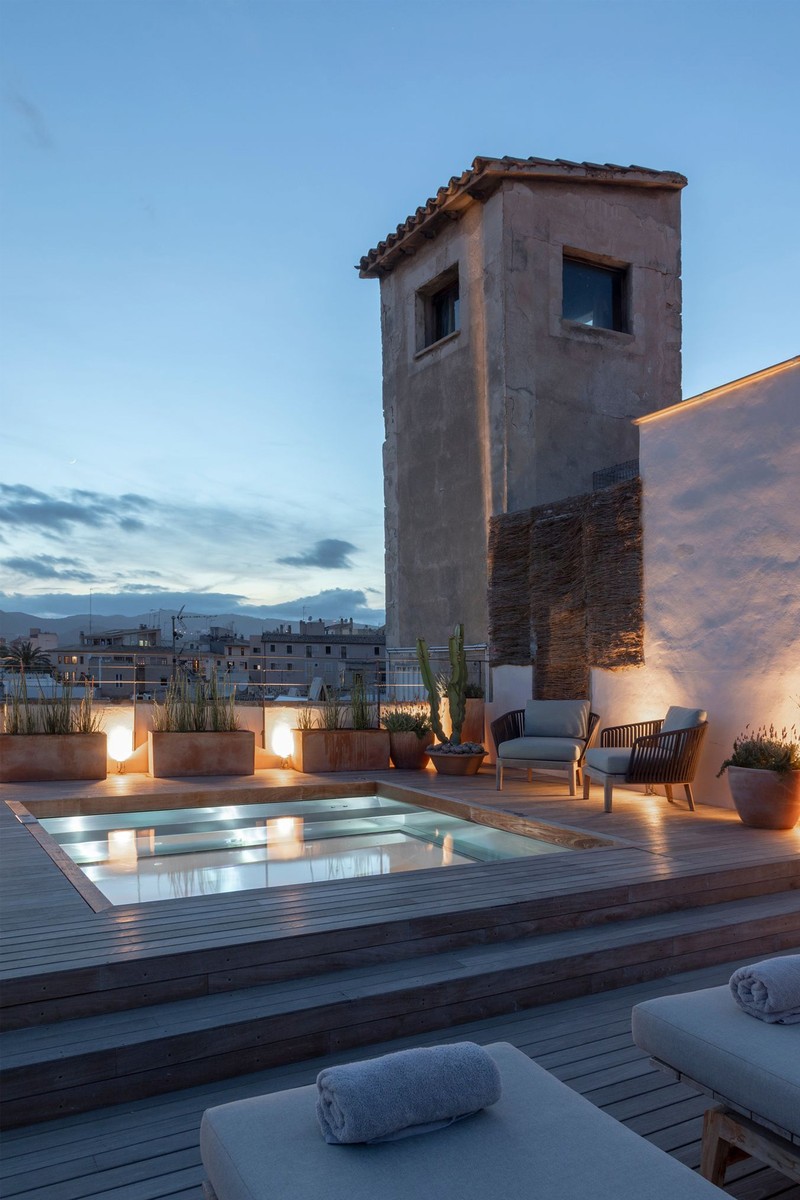
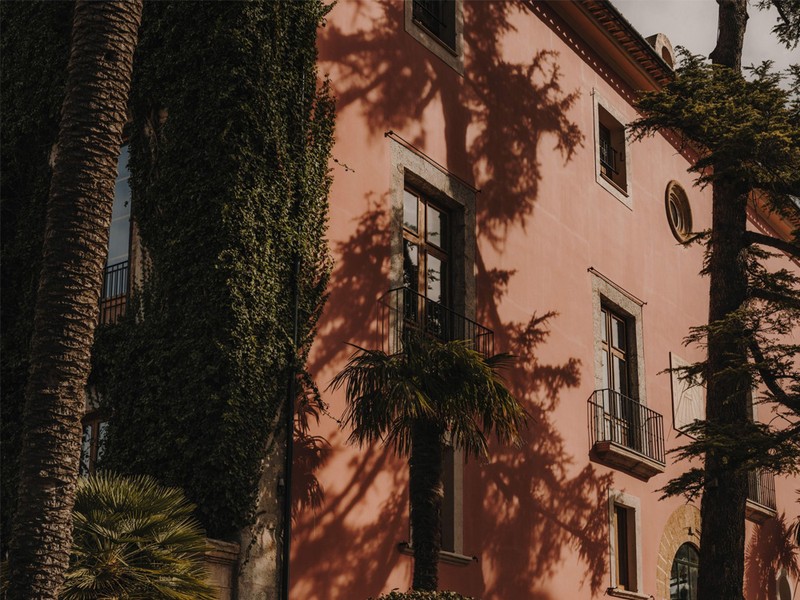
/https%3A%2F%2Fsheerluxe.com%2Fsites%2Fsheerluxe%2Ffiles%2Farticles%2F2023%2F07%2Fspanish-islands-image-3.jpg?itok=4Tu6jsbr)
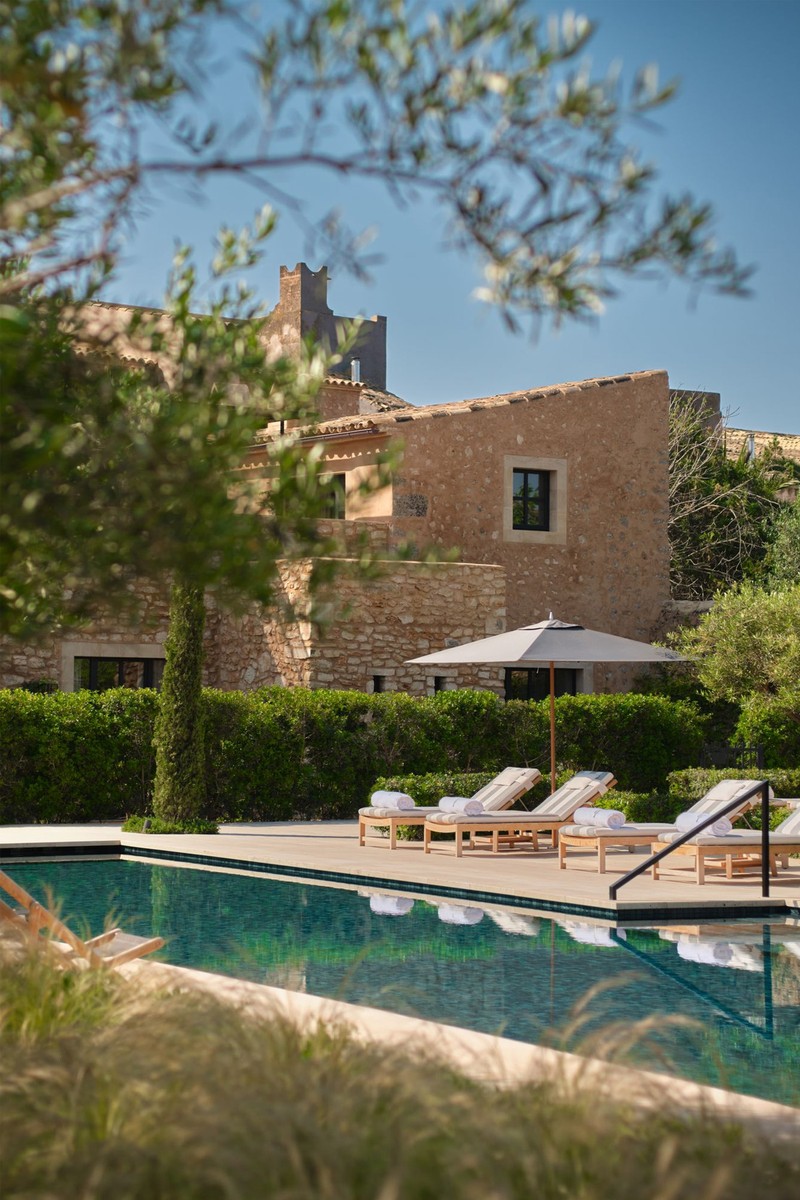
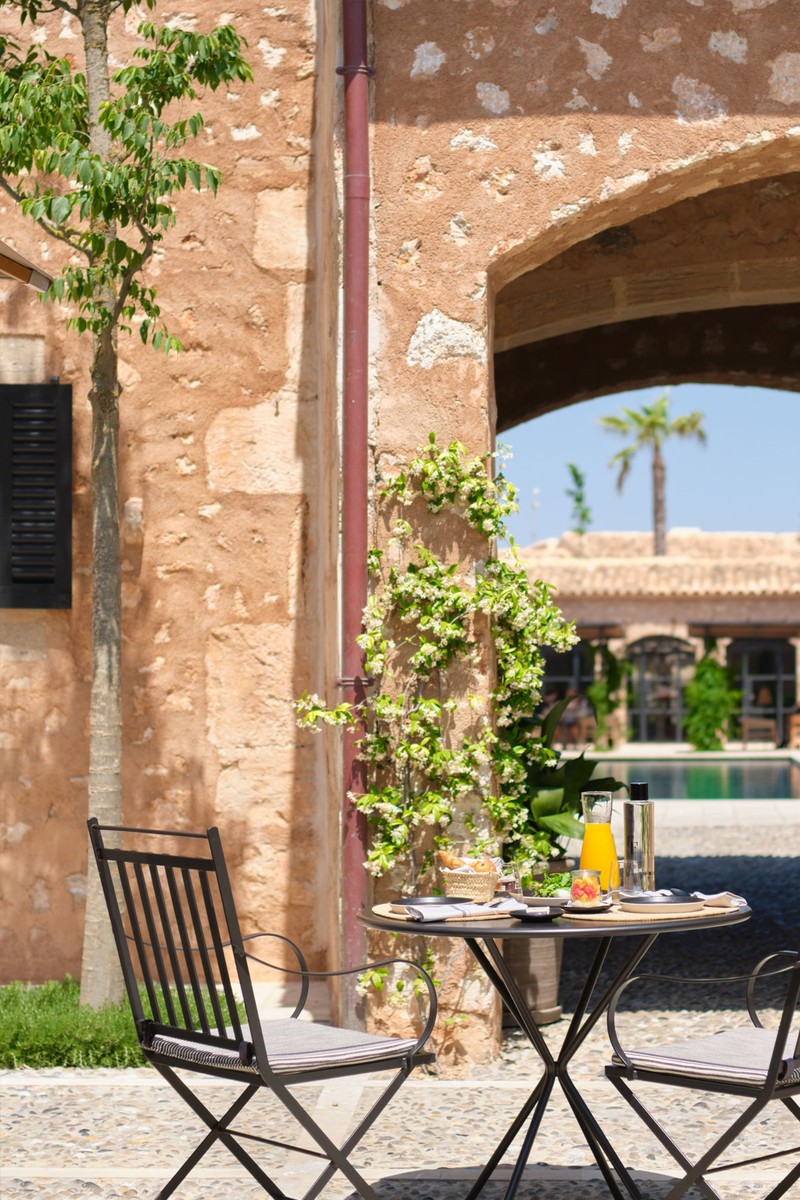

/https%3A%2F%2Fsheerluxe.com%2Fsites%2Fsheerluxe%2Ffiles%2Farticles%2F2023%2F07%2Fspanish-islands-image-7.jpg?itok=4NliZbEI)
